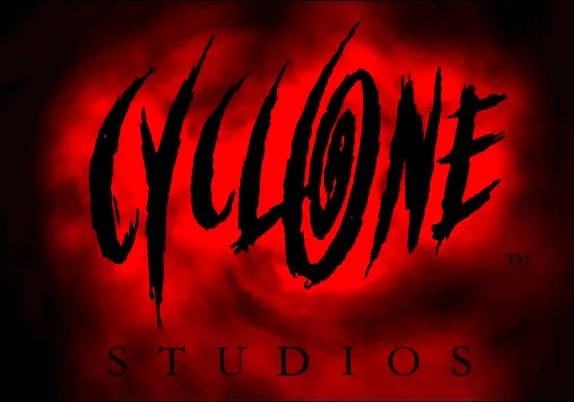Cyclone Studios
Moby ID: 82
Overview edit · view history
Helmut Kobler and Ron Little founded Cyclone Studios in December 1993. With the help from an angel investor's capital and monies out of their own pocket, Cyclone Studios produced a prototype of what would become Captain Quazar. That prototype helped them secure a contract with 3DO to make Quazar for 3DO’s home console system. Quazar was a top down isometric 3D cartoon-ish style shooter. The contract allowed Cyclone to move from Ron Little’s apartment in Oakland to their first small office in Redwood City, California in June 1994.
A second title was started called BattleSport that was also for the 3DO system. BattleSport was a first person 3D tank/soccer type game similar to Ball Blazer. Soon after in the spring of 1995, Cyclone moved into a still larger office in Menlo Park, California. Quazar shipped in early 1996 and BattleSport in late 1995. Both were met with moderate to solid critical acclaim but sold poorly.
Poor sales of their first two titles put Cyclone in a dire financial situation at the end of 1995. Little and Kobler were forced to sell the studio to the 3DO Company in the December 1995. Cyclone Studios remained as a separate development house but was entirely funded by 3DO. Kobler was given leadership of the new division and Little was given the roll of tech lead.
In the summer of 1996, Cyclone moved to its final location in San Mateo, California. Two original PC titles were born during this period. Those two games were Requiem: Avenging Angel and Uprising. Requiem was a story driven first person shooter. Uprising was a hybrid first person action/strategy game. Uprising shipped in October 1997 and Requiem in the April 1999. Again, both were met with modest to solid critical acclaim but sold below expectations. Two sequels were made that were inspired by Uprising’s critical success. Uprising 2: Lead and Destroy for the PC and Uprising X for the Sony Playstation were the last games to be completed by Cyclone in their San Mateo office.
The company’s culture could be best described by a quote from Gordon Gekko in the film Wall Street, “Give me guys that are poor, smart and hungry.” This seemed to be the hiring mantra for Cyclone. For most of Cyclone’s history, nearly all the artists and programmers had little or no professional game development experience when hired. Many of the employees were straight out of college. Virtually all hires had one common trait. All were avid lifetime gamers. This mixture paid off in passionate and sometimes volatile results. Despite the teams’ inexperience (or due to it) all the games made at Cyclone were built from the ground up. Every game had it’s own unique code and art database. Everything that went into the game was tailored to the game’s requirements. This allowed for ideas to be more freely considered and added to the design by anyone involved with the game. This also contributed to the enthusiasm and volatility at the company.
In the end, some employees would say it was the best job they ever had and others would say the worst. However, all would agree it was never boring. In December 1998, Cyclone Studios and its employees were absorbed into 3DO and closed its doors for good.
Credited on 6 Games from 1995 to 1999
| Requiem: Avenging Angel (1999 on Windows) |
| Uprising 2: Lead and Destroy (1998 on Windows) |
| Uprising X (1998 on PlayStation) |
| Uprising: Join or Die (1997 on Windows) |
| Captain Quazar (1996 on Windows, 3DO) |
| BattleSport (1995 on DOS, PlayStation, 3DO...) |
History +
- December 1998
-
Cyclone Studios and its employees were absorbed into 3DO and closed its doors for good.
- 1996
-
Offices moved to San Mateo, California
- December 1995
-
Company sold to 3DO but remained a separate development house funded by 3DO
- December 1993
-
Cyclone Studios founded; office located in Redwood, California
Related Web Sites +
-
Cyclone Studios
official site -
Cyclone Studios Info Page
Info from the Uprising site
Frequent Collaborators
Companies- 6 games with 3DO Company, The
- 3 games with Valve Corporation
- 3 games with Retroism
- 3 games with Ziggurat Interactive, Inc.
- 3 games with Epic Games Tools LLC
- 3 games with Tommo Inc.
- 2 games with Mastertronic Games Ltd.
- 2 games with Ubisoft Entertainment SA
- 2 games with MPath Interactive
- 2 games with Imagineer Co., Ltd.
- 4 games with Helmut Kobler
- 3 games with Ron Little
- 3 games with David A. Lucca
- 3 games with Maurice Jackson
- 3 games with Maarten Kraaijvanger
- 3 games with Greg Savoia
- 3 games with Yujin Kiem
- 3 games with Jesse Anacleto
- 3 games with Patrick MacKellar
- 3 games with Justin Mateo
Browse Games
Contribute
Add your expertise to help preserve video game history! You can submit a correction or add the following:


